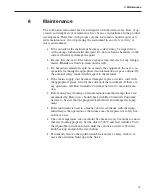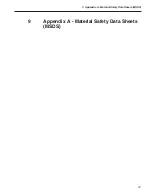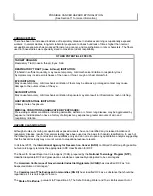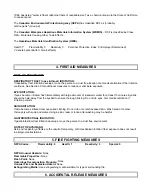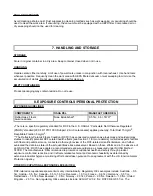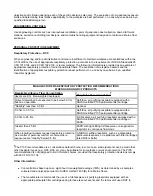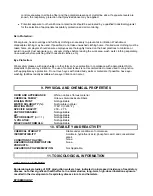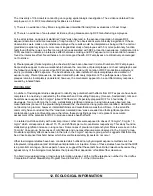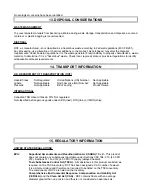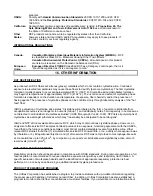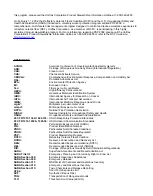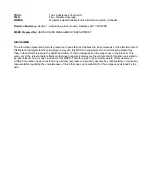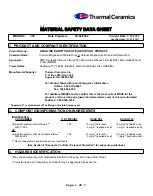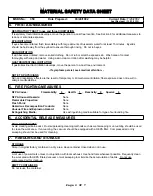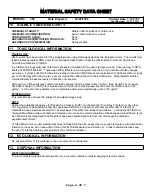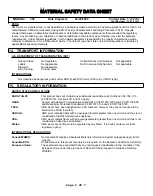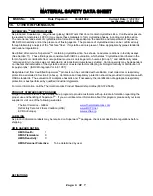
MATERIAL SAFETY DATA SHEET
MSDS No:
350
Date Prepared:
03/24/1992
Current Date:
7/26/2002
Last Revised:
(03/20/2002)
4. FIRST AID MEASURES
RESPIRATORY TRACT (nose and throat) IRRITATION
If respiratory tract irritation develops, move the person to a dust free location. See Section 8 for additional measures to
reduce or eliminate exposure.
EYE IRRITATION
If eyes become irritated, flush immediately with large amounts of lukewarm water for at least 15 minutes. Eyelids
should be held away from the eyeball to ensure thorough rinsing. Do not rub eyes.
SKIN IRRITATION
If skin becomes irritated, remove soiled clothing. Do not rub or scratch exposed skin. Wash area of contact
thoroughly with soap and water. Using a skin cream or lotion after washing may be helpful.
GASTROINTESTINAL IRRITATION
If gastrointestinal tract irritation develops, move the person to a dust free environment.
- If symptoms persist, seek medical attention. -
NOTE TO PHYSICIANS
Skin and respiratory effects are the result of temporary, mild mechanical irritation; fiber exposure does not result in
allergic manifestations.
5. FIRE FIGHTING MEASURES
NFPA Codes:
Flammability: _ 0_ , Health: _1_ , Reactivity: _ 0_ , Special: _ 0_
NFPA Unusual Hazards:
None
Flammable Properties:
None
Flash Point:
None
Hazardous Decomposition Products:
None
Unusual Fire and Explosion Hazard:
None
Extinguishing Media:
Use extinguishing media suitable for type of surrounding fire.
6. ACCIDENTAL RELEASE MEASURES
SPILL PROCEDURES
Avoid creating airborne dust. Dust suppressing cleaning methods such as wet sweeping or vacuuming should be used
to clean the work area. If vacuuming, the vacuum should be equipped with a HEPA filter. Compressed air or dry
sweeping should not be used for cleaning.
7. HANDLING AND STORAGE
STORAGE
Store in original factory container in a dry area. Keep container closed when not in use.
HANDLING
Limit use of power tools unless in conjunction with local exhaust. Use hand tools whenever possible. Frequently clean
the work area with HEPA filtered vacuum or wet sweeping to minimize the accumulation of debris. Do not use
compressed air for clean-up.
EMPTY CONTAINERS
Do not reuse the container.
Page 2 Of 7

